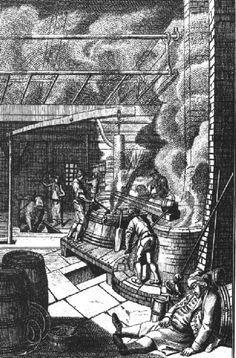 If it weren’t for monks, many of the classic beer styles we now enjoy may not have been developed. In particular, Belgian monks from the Order of Cistercians of the Strict Observance, a Roman Catholic contemplative order that believes monasteries should be self-sustaining. Because of this, monks took up many trades, brewing highly-coveted beer was among them.
If it weren’t for monks, many of the classic beer styles we now enjoy may not have been developed. In particular, Belgian monks from the Order of Cistercians of the Strict Observance, a Roman Catholic contemplative order that believes monasteries should be self-sustaining. Because of this, monks took up many trades, brewing highly-coveted beer was among them.
A favorite style produced by monks – the tripel – was developed relatively recently at the Brouwerij der Trappisten van Westmalle or Westmalle Brewery in 1934. As a style, tripels are golden in color with aromas and flavors of apple, pear, citrus, or banana-like fruitiness, clove-like or peppery spice. Other characteristics of the style are its high alcohol (7-percent to 10-percent by volume) and its dry finish.
As early as the 6th century, monks were brewing beer. The story of the brewery at Westmalle Abbey begins in 1836 when monks began brewing beer at the Abbey. At that time, the beer was not intended to produce a profit, instead it was to be used only for the refreshment of the monks and their guests. Later, in 1856, the Abbey began selling a small portion of the beer to villagers at the gates to the monastery.
As demand grew the Abbey did, too. Expansions were undertaken in both 1865 and 1897. In those early years, the brewery produced mostly dark beers. Westmalle was best known for its dubbel, a strong dark ale that developed flavor by boiling the wort for eight to ten hours. The long boil was thought to develop the deep color and complex flavors.
Demand continues to rise and, in 1921, the Abbey decided to sell their beer to outside resellers. This necessitated another expansion that included that construction of a dedicated yeast room and a workshop. When completed in 1934, the new additions are celebrated by the introduction of a new style of beer; the tripel.
Because the palates of Belgians at that time were more attuned to darker, richer ales, the release of the golden-hued tripel was considered a radical move by a group that was known to be overwhelmingly traditional. But, as drinkers began tasting the fruity, high-alcohol brew, demand began to grow. For the next 20 years, the monks tinkered with the recipe until 1954 when Brother Thomas Sas dialed the formula in and created the tripel we know today.
So, important was it to the monks that the character of the tripel remain intact they instructed Jan Adriaensens, who has overseen brewing at Westmalle since 1982 he was to make no alterations. So, when the brewery decided to switch from square fermenters to the more modern conical style, he spent eight years experimenting on a smaller pilot system to ensure the beer would not be effected.
Though the tripel produced by Westmalle is the original and standard bearer for the style, other breweries have produced their own versions. Here are a few to look for at your local market.
New Belgium Trippel
Creamy and fruity with plenty of alcohol punch, this beer the Colorado and now North Carolina brewery reveals citrus, dark fruit and other spicy flavors.
Victory Golden Monkey
Easy drinking and refreshing despite its 9.5% ABV, this one will sneak up on you if you aren’t careful.
Wicked Barley Monks Menage
When this tasty Belgian-style tripel is on tap, it treats drinkers to a solid, boozy experience redolent with cracker, spice and pepper.
Advertisements &b; &b;